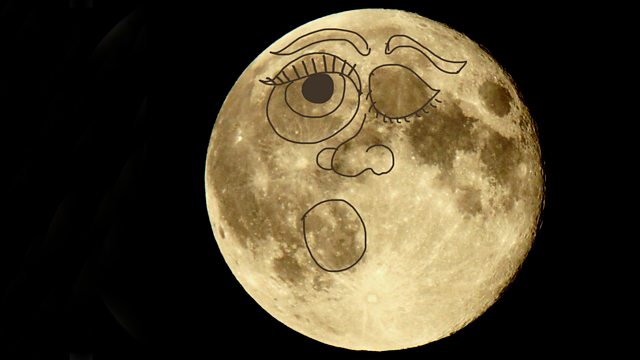Smashing into the Moon
Smashing into the Moon; London’s Geological Secrets; Honeyguides; Preserving the Taste of Local French Cheese
Space ballistics has shown that the eye of the ‘Man in the Moon’ - the huge crater Mare Imbrium was most likely made by the impact of a huge proto-planet smashing into it.
London’s Geological Secrets
Dr Ruth Siddall from UCL and London Pavement Geology takes Roland on a whistle stop tour around London. They check out some geological sites, and there’s not a mountain, river bed or quarry in sight. We see granite that’s been impacted by comets, 400 million year old squid fossils on the steps of St Paul’s, a Jurassic beach right here at the 91�ȱ� and finish with a geological pub stop.
Honeyguides
It’s known that the bird the Greater honeyguide works with local African villagers to show them where to find wild bee nests and their honey stores. But new research has shown that the birds respond more, and are more likely to find a hive when the human honey-hunters use a special call.
Preserving the Local Taste of Cheese
The taste, smell and appearance of a cheese come from the native bacteria in the initial raw milk. Due to increasing regulations for milk pasteurization, cheeses are losing their particular flavours and authenticity. In Normandy, in France, cheesemakers started working with researchers to set up a microbial bank in order to save the microorganisms responsible for the cheesy flavours.
[Photo: ‘The Man in the Moon’ - open eye is Mare Imbrium crater. Credit: 91�ȱ�]
Last on
Clip
-
![]()
Smashing the moon in the face
Duration: 01:23
Broadcasts
- Thu 21 Jul 2016 21:32GMT91�ȱ� World Service except East and Southern Africa & News Internet
- Fri 22 Jul 2016 01:32GMT91�ȱ� World Service Americas and the Caribbean
- Fri 22 Jul 2016 02:32GMT91�ȱ� World Service Online, Europe and the Middle East & UK DAB/Freeview only
- Fri 22 Jul 2016 03:32GMT91�ȱ� World Service East Asia & South Asia only
- Fri 22 Jul 2016 04:32GMT91�ȱ� World Service Australasia
- Fri 22 Jul 2016 06:32GMT91�ȱ� World Service East and Southern Africa & Europe and the Middle East only
- Fri 22 Jul 2016 14:32GMT91�ȱ� World Service except News Internet
Podcast
-
![]()
Science In Action
The 91�ȱ� brings you all the week's science news.



